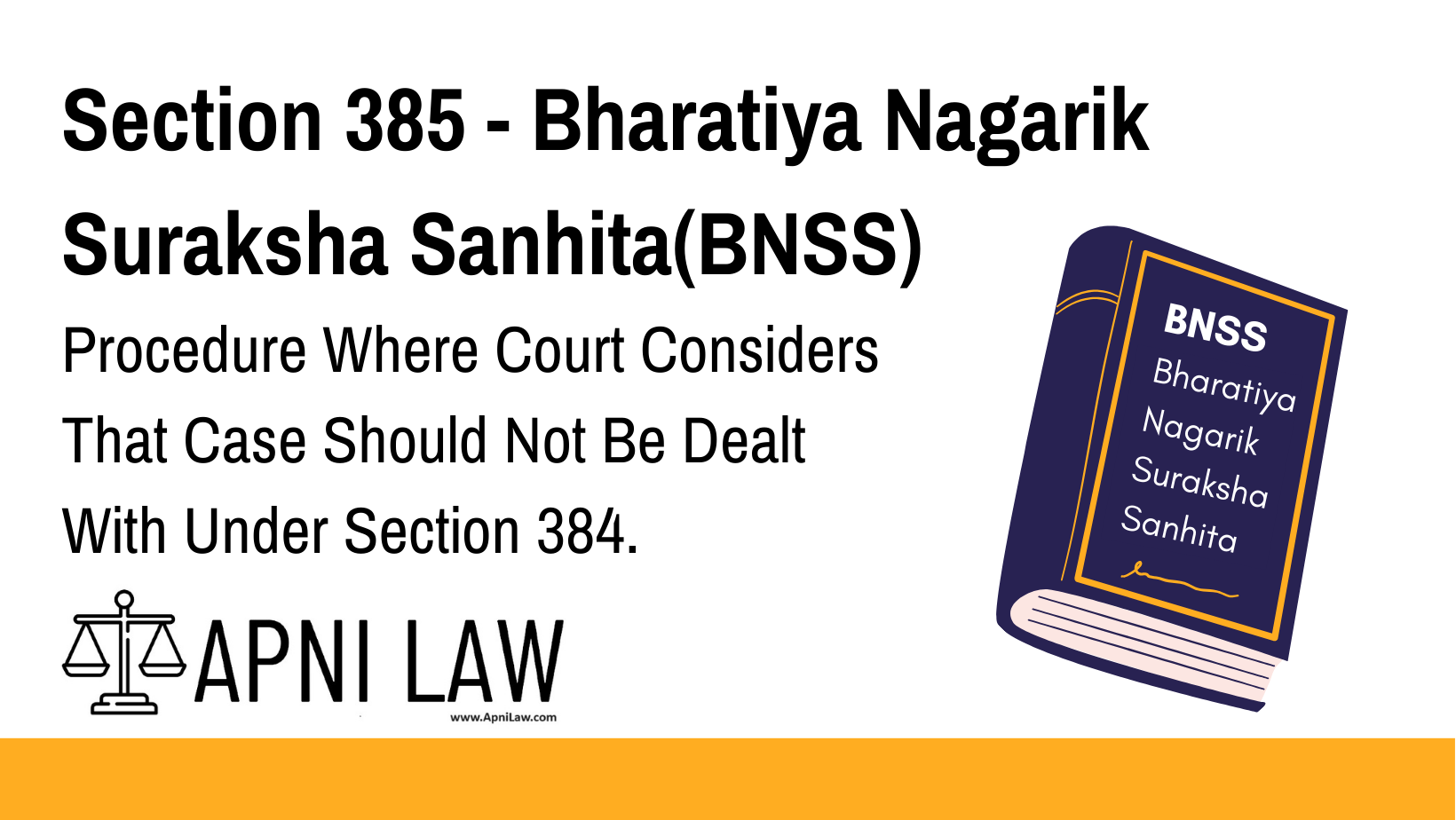Code: Section 385 BNSS
When Offences in Court Are Sent to a Magistrate
(1) If the Court in any case considers that a person accused of any of the
offences referred to in section 384 and committed in its view or presence should be imprisoned
otherwise than in default of payment of fine, or that a fine exceeding two hundred rupees
should be imposed upon him, or such Court is for any other reason of opinion that the case
should not be disposed of under section 384, such Court, after recording the facts
constituting the offence and the statement of the accused as hereinbefore provided, may
forward the case to a Magistrate having jurisdiction to try the same, and may require
security to be given for the appearance of such person before such Magistrate, or if sufficient
security is not given, shall forward such person in custody to such Magistrate.
(2) The Magistrate to whom any case is forwarded under this section shall proceed to
deal with, as far as may be, as if it were instituted on a police report.
Explanation of Section 385 BNSS
Section 385 BNSS provides a mechanism to escalate certain cases where an offender in court requires a harsher punishment than what Section 384 BNSS allows.
Key Provisions:
- When Can a Case Be Forwarded?
- If the offence requires imprisonment beyond default for fine.
- If a fine exceeding ₹200 is deemed necessary.
- If the Court believes that a Magistrate should handle the case instead of using summary punishment under Section 384 BNSS.
- Procedure to Forward the Case
- The Court records the facts and the accused’s statement.
- The case is sent to a Magistrate with jurisdiction.
- The Court may demand security for the accused’s court appearance.
- If the accused cannot provide security, they must be sent to the Magistrate in custody.
- How the Magistrate Handles the Case
- The Magistrate must treat the case as if it were based on a police report.
- This allows for a detailed trial with proper legal procedures.
Illustration
Example 1: Severe Contempt of Court
A person threatens a judge in open court. Since this is a serious offence that may warrant imprisonment beyond one month or a fine above ₹200, the Court decides not to use Section 384 BNSS and instead forwards the case to a Magistrate under Section 385 BNSS for a formal trial.
Example 2: False Evidence in Court
A witness knowingly gives false evidence under oath in a judicial proceeding. The judge feels that a harsher punishment than ₹1,000 fine or one-month imprisonment is necessary. Therefore, the case is forwarded to a Magistrate for proper trial under Section 385 BNSS.
Common Questions and Answers on Section 385 BNSS
1. How is Section 385 BNSS different from Section 384 BNSS?
- Section 384 BNSS allows for immediate summary punishment (fine up to ₹1,000 or one-month simple imprisonment).
- Section 385 BNSS is used when a harsher punishment (longer imprisonment or higher fine) may be needed, so the case is sent to a Magistrate for trial.
2. What happens if an accused fails to provide security for appearance?
If the accused cannot provide security, the Court must send them in custody to the Magistrate.
3. Does the Magistrate treat the case as a fresh complaint?
No. The Magistrate must handle it as if it were a police report case, meaning it follows the criminal trial procedure.
4. Can a person be punished under both Section 384 BNSS and Section 385 BNSS?
No. If a Court decides to escalate a case under Section 385 BNSS, it cannot punish the offender under Section 384 BNSS first.
5. Can the Magistrate impose a punishment higher than what Section 384 BNSS allows?
Yes. Since the case is now under full trial, the Magistrate is not limited to the punishments prescribed under Section 384 BNSS.
Conclusion
Section 385 BNSS ensures that serious offences committed in the presence of a Court are escalated for proper trial when a summary punishment under Section 384 BNSS is insufficient. This helps maintain judicial authority while ensuring proportionate punishment.
For more legal insights, visit ApniLaw!








